The Gold Mine est le premier épisode de la trilogie rédigée par Michael et Freddy Ballé sur le sujet de la mise en œuvre du Lean Management. Tout comme les deux autres épisodes (The Lean Manager et Lead With Respect) il s’agit d’une fiction. Lorsqu’on a demandé à Michael les motifs derrière ce choix du Business Novel pour écrire sur le Lean, il a expliqué qu’il s’agissait selon lui de la forme de la plus adaptée pour « mettre en valeur la dimension pratique du Lean en l’inscrivant dans un contexte précis. »
Mais selon nous, la vertu principale de cette perspective rédactionnelle est sa capacité à donner corps à la notion d’apprentissage. Car The Gold Mine est avant tout un roman d’apprentissage, l’apprentissage d’un dirigeant au pied du mur alors que son entreprise traverse des difficultés importantes.
Get Started for FREE
Sign up with Facebook Sign up with X
I don't have a Facebook or a X account

 Your new post is loading... Your new post is loading...
 Your new post is loading... Your new post is loading...
Current selected tag: 'livre'. Clear
From
aqoba
7 livres références de la transformation d'entreprise à mettre sur votre table de chevet
This is my summary of the The Pragmatic Programmer, by Andrew Hunt and David Thomas. I use it while learning and as quick reference. It is not intended to be an standalone substitution of the book so if you really want to learn the concepts here presented, buy and read the book and use this repository as a reference and guide.
This list is not complete, as there are always some new and good books, but these ones made the most impact in the careers of many software developers.
Table of Contents
Back from the brink—the first fail-safe recovery plan for turning around troubled projects. When budgets are dwindling, deadlines passing, and tempers flaring, the usual response is to browbeat the project … - Selection from Rescue the Problem Project [Book]
The biggest flaw of most Product Owners is the misunderstanding of value. A faulty perception of value will lead Scrum Teams in the wrong direction, which results in pointless…
Via Oliver Durrer swissleap.com
The Flow System is a holistic FLOW based approach to delivering Customer 1st Value. It is built on a foundation of the Toyota Production System (TPS/LEAN) and the new Triple Helix of Flow creating the DNA of Organizations.
Change can be intimidating, particularly when it comes to your organization. This chapter will help ease you through those changes with finesse. Who knows? Maybe you'll even find yourself looking forward to change.
Mickael Ruau's insight:
This research has identified several factors that speed up or slow down the innovation-decision process and, as a result, the time it will take the change to become part of the environment. We consider three factors: the change agent, the culture, and the people. To begin a successful change effort, you will need to understand all three and how they work together.
The Book Fearless Change by Mary Lyan Manns and Linda Rising
Mickael Ruau's insight:
I am not currently working on a project where I need to instigate a lot of change so I was going slightly against my own principle of only reading books when I need to, but I recalled several times previously when I have tried to introduce what I thought were good ideas and didn’t really get anywhere.
https://amzn.to/3nHC5YK This week we begin our re-read of Mik Kersten’s Project to Product. I am reading from my Kindle version published by IT Revolution (buy a copy).Today we are tackling the front matter which includes the Foreword by Gene Kim (author of the DevOps Handbook) and the Introduction,... |
Je vous livre ce que j’en retiens :
From
github
SummariesLiftoff
Ways of working
PeopleTeamworkStrategy
Strategy analysis
Business model canvasTactics
Practices
MarketsProduct/market fitCustomer development
Product development
Modeling
Markup
ManagementPractice makes perfect
Metrics
MeetingsBrainstormingQuality assurance
SalesInvestment
Startup advice
Mickael Ruau's insight:
Books to readBooks to read, in order of importance for immediate tactical usefulness. Startup workbooksThe Startup Owner's Manual: The Step-by-Step Guide for Building a Great Company Business Model Generation: A Handbook for Visionaries, Game Changers, and Challengers Lean startup developmentThe Four Steps to the Epiphany: Successful Strategies for Products that Win Lean Customer Development: Building Products Your Customers Will Buy The Lean Startup: ... Use Continuous Innovation to Create Radically Successful Businesses Business managementThe Hard Thing About Hard Things: Building a Business When There Are No Easy Answers Zero to One: Notes on Startups, or How to Build the Future Measure What Matters: How Google, Bono, and the Gates Foundation Rock the World with OKRs Change opportunityCrossing the Chasm: Marketing and Selling Disruptive Products to Mainstream Customers The Innovator's Dilemma: When New Technologies Cause Great Firms to Fail Only the Paranoid Survive: How to Exploit the Crisis Points That Challenge Every Company TeamworkWork Rules!: Insights from Inside Google That Will Transform How You Live and Lead Getting to Yes: Negotiating Agreement Without Giving In The Primes: How Any Group Can Solve Any Problem Crucial Conversations: Tools for Talking When Stakes Are High
Notes by Jeremy W. Sherman, October 2013, based on: Feathers, Michael. Working Effectively with Legacy Code. Sixth printing, July 2007.
“The Pragmatic Programmer” est une bible pour les développeurs. Il est l’œuvre d’Andrew Hunt et Dave Thomas d’après leurs expériences en tant que développeurs. Leur objectif est simple, faire du lecteur un Pragmatic Programmer, un développeur fier de son travail et qui utilise les meilleures techniques à sa disposition pour faire un travail de qualité.
Mickael Ruau's insight:
This list is not complete, as there are always some new and good books, but these ones made the most impact in the careers of many software developers.
Home page for the bestselling book Rescue the Problem Project
Here is a list of the best books new software developers can learn from. I’ve selected books with long-lasting advice that will remain relevant for many years.
This book provides an introduction to the role of diversity in complex adaptive systems. A complex system — such as an economy or a tropical ecosystem — consists of interacting adaptive entities that produce dynamic patterns and structures. Diversity plays a different role in a complex system than it does in an equilibrium system, where it often merely produces variation around the mean for performance measures. In complex adaptive systems, diversity makes fundamental contributions to system performance.
Mickael Ruau's insight:
Table of Contents
In this interview made by Floyd Marinescu, co-founder of InfoQ, Linda Rising talks about the book "Fearless Change: Patterns for Introducing New Ideas" and offers examples of how the patterns presented in the book can ease the stress of Agile adoption.
Mickael Ruau's insight:
6. Continuing with the scenario, how do you convince them to take an idea? You bring in the cookies and some people will be convinced just because they are innovators and they like new ideas and some people will be convinced by the fact that the innovators are excited and you brought in the right kind of chocolate chip cookies, so you are slowly making headway. Other people on the technical environment are often convinced because they are early adopters and they need evidence. 7. Is one of your patterns "Convince the guru"? Yes. It is called "guru on your side". So, if you have the brown bag, the first person you might invite would be the local guru and give it a little head start because gurus do not get to go to conferences. They are too valuable. They are always working on 6 or 7 projects and they are loaded with deadlines, so they never let them out. They want to hear about this stuff, so you can overwhelm them, you can make them feel bad that they didn't get to go to the conference, but you give them a little preview, so when they come to the brown bag they already know enough, so they can nod at the right time and validate what you are saying and everybody in the room will be looking to the guru and say "Wow, he likes it, and we are having cookies and the innovators are excited" so they get caught up in that. 8. What comes next? Once you have had your meeting and you have raised the buzz, then what? Nothing convinces people more than experience. And of course, you have just been at QCon and you have never done Agile development or whatever the new thing is, so you get maybe some available innovator, or maybe now somebody who is a little more open and say "You know, maybe we could try, just an experiment, pair programming. I am working on this particular part of the project. Would you like to try that with me? And then we could see how it works for us, so a little trial run, just a little experiment". And then, if it works, if it really does work, you have an ally because the two of you have tried it.
Even though change is difficult, leaders can't avoid it. So wouldn't it be wonderful if people who have successfully introduced a new idea into an organization could share their stories with you? Our book, Fearless Change: Patterns for Introducing New Ideas is the next best thing. We have gathered proven strategies for leading a change initiative. To do this, we heard numerous experiences from people leading change in a variety of sizes and types of organizations throughout the world. While doing this, we documented our observations, read publications on the topics of change and influence, studied how change agents throughout history have tackled the problems they faced, and exposed our work for comment and feedback. Change is hard. Leaders will struggle and so will the people they are trying to convince. But the stories of success we have heard show that there is hope. You need three things to introduce your idea: your belief in it, the determination to act on your belief, and some information on how to bring the idea into your organization. You supply the first two; the patterns in Fearless Change provide the third.
The book includes a complete version of the patterns, a framework for using them, and experience reports that describe how the patterns can help you introduce new ideas into your organization!
Mickael Ruau's insight:
Pattern Summaries These files are formatted for easy printing on index cards:
|



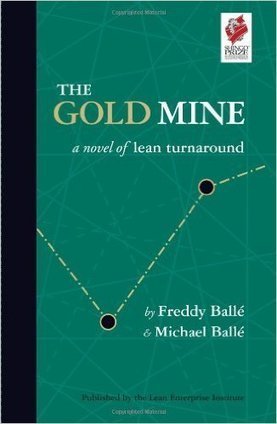



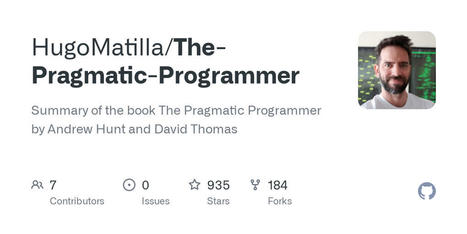


![Rescue the Problem Project [Book] | Devops for Growth | Scoop.it](https://img.scoop.it/2MYJ-9YoA5Zqo14HfZXw5Tl72eJkfbmt4t8yenImKBVvK0kTmF0xjctABnaLJIm9)



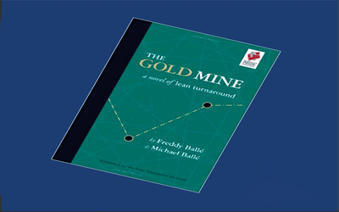


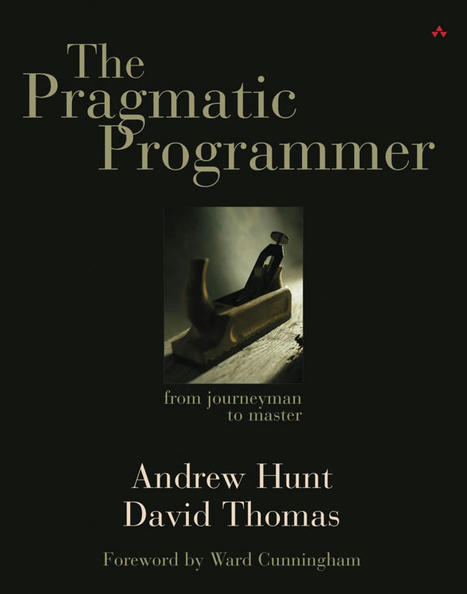




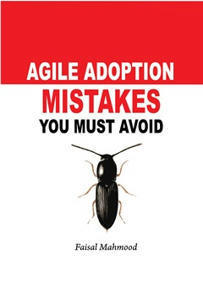






On retrouve ces quatre personnages principaux dans les 10 chapitres du livre, chapitres présentés dans l’ordre de la transformation à mettre en œuvre.
La suite de ce billet ne décrit pas ces 10 chapitres mais s’intéresse plutôt aux idées qui me semblent les plus importantes.
1/ Comprendre la situation
Le premier chapitre est un exemple de gemba : une visite terrain à travers laquelle les auteurs expliquent comment voir la valeur. Bobby le père donne une excellente explication de cette approche :
Il s’agit d’un point essentiel : dans le Lean on veut établir une compréhension factuelle de la situation et cela ne peut se faire qu’en allant sur le terrain. Par ailleurs, c’est ainsi que le construit le lien entre la stratégie et l’opérationnel, en s’intéressant au travail des opérationnels et aux obstacles qui leur empêchent de créer davantage de valeur.
2/ Qualité
Une fois la situation comprise à travers l’observation sur le terrain, le premier sujet à traiter est toujours la qualité. Pour une raison qui nous échappe (et sur laquelle Michael a déjà écrit) on ne pense pas à cela en premier. On pense qu’en modifiant le processus ou en ré-organisant l’équipe, les résultats vont s’améliorer. Et on s’obstine malgré d’innombrables exemples qui nous prouvent le contraire. Car comme le dit The Gold Mine : la non-qualité a un coût et ces coûts se reflètent dans le prix des produits ou services que commercialisent l’entreprise.
L’objectif est d’avoir un système qui permet de rendre ces problèmes de qualité visibles, et de montrer les pièces non conformes. Respecter les personnes c’est déjà donner à chacun, sur l’ensemble de la chaîne de production les moyens, de déterminer si oui ou non leur travail est de qualité (la notion de built-in quality).
La stratégie consistant à déléguer la qualité à une équipe dédiée en bout de chaîne est une manière de dire au reste des équipes que la qualité n’est pas leur sujet : cela encourage inconsciemment la non qualité sur l’ensemble de l’entreprise. Et c’est précisément ce message que combattent nos 4 amis.
3/ Priorités
A plusieurs reprises, inlassablement, le vieux loup de mer revient sur l’ordre de mise en œuvre du Lean dans l’entreprise :
4/ Inventaire
Par démagogie, on réduit parfois le Lean à du bon sens mais nous sommes ici à l’opposé des intuitions habituelles.
Par ailleurs, comme l’on souhaite que les opérateurs n’aient sous la main que les choses dont ils ont besoin autour d’eux, il leur faut un poste de travail de taille limitée que l’on ne veut pas encombrer avec des pièces inutiles (dans le sens où il n’en a pas besoin maintenant).
Les auteurs expliquent que cet inventaire est créé par la différence du flux entre deux processus. Si l’on parvient à bien lisser la charge, on peut tirer le flux sans avoir besoin de trop d’inventaire. Le risque étant de supprimer les stocks intermédiaires (approche radicale) sans avoir au préalable supprimé les causes de variations.
5/ Stratégie
Bobby insiste sur les deux priorités de l’entreprise de Philip : livrer les machines au client en premier lieu, puis réduire les stocks.
Une autre assertion contre-intuitive dans l’entreprise telle que nous la connaissons aujourd’hui.
Les auteurs de rajouter ce point essentiel :
6/ Management
Toyota a un team leader pour chaque groupe de 5 à 7 opérateurs et un manager pour 3 team leaders. Toyota a donc davantage de supervision sur le terrain que les entreprises classiques et cela s’avère beaucoup plus efficace. Harada et Ohno en expliquent la raison : ces encadrants sont en charge de garantir le flux continu et l’amélioration continue.
7/ 5S et standard
L’analogie intéressante entre l’entretien de son bateau et la politique de Total Productive Maintenance :
Même si les auteurs ont choisi de parler de standard en privilégiant la dimension 5S c’est probablement parce qu’il s’agit du premier point sur lequel insistent les sensei . Ils rappellent la raison d’être du standard :
8/ Kaizen
9/ Finance
Il s’agit d’un point bien évidemment capital pour un dirigeant. Même si l’objectif de toute transformation Lean est de placer l’ensemble des équipes dans une dynamique d’amélioration continue, au final ce qui importe c’est la viabilité de l’entreprise et des emplois. Et cela est garanti par une situation financière améliorée.
Comme l’indique le titre du premier chapitre : Profit is King but Cash Rules, un des avantages incomparables du Lean avec l’approche par flux limitant les stocks est de libérer rapidement de la trésorerie. C’est cette trésorerie qui va garantir une plus grande autonomie à l’entreprise, et sa capacité à investir dans de nouveaux produits et de nouveaux emplois. Les auteurs invitent au sujet de l’équilibre financier à changer de perspective :
Un ouvrage essentiel pour raconter la découverte de cette opportunité stratégique pour l’entreprise.